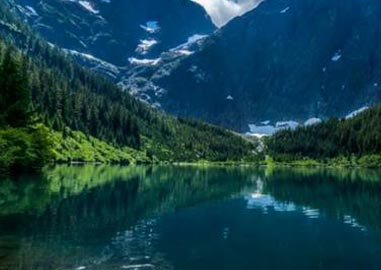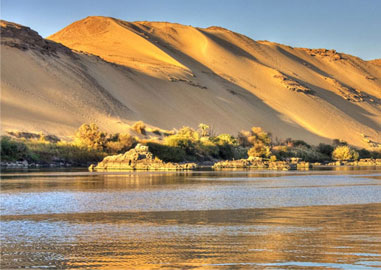
What Causes Water Pollution on Earth - Major Reasons
Posted By IsacWater—Life-sustaining Substance:
Seventy percent of the planet consists of water which is vital for the sustenance of all forms of life. Also called universal solvent, it is present in various forms, such as lakes, rivers, seas, oceans and glaciers. However, less than two percent of all of this liquid is pure and can be consumed by human beings. This percentage is being reduced further day by day owing to various factors, such as over-consumption and pollution. The wastage of pure drinkable liquid is causing the lowering and depletion of underground resources. The addition of nutrients and chemicals into freshwater bodies is making is unsuitable for drinking. Its intentional or unintentional consumption results in diseases and ultimately death of humans and animals, thus incurring a great loss of life and property.
Water Pollution & Its Solution:
If this trend of pollution and wastage of the universal solvent (water) continues with the same pace, a day will come when human generation will be left with no more pure water to drink. Such a situation will also be severely harmful for all other kinds of animal and plant life on the planet earth. So, to save the future human generations from such an unbearable condition, we will have to take appropriate measures well in time. The first important step, in this regard, is to find out what causes water pollution on earth. After that, effective strategies will be devised by the responsible authorities to address all such issues, while following the priority order, i.e. starting from the most serious problem and ending at the least harmful one.
Major Water Pollutants:
The following discussion contains useful information about water pollution on earth. Let’s discover the main factors which are contaminating this precious resource of the planet.
Eutrophication
Eutrophication is a process which causes contamination by the addition of large quantities of nutrients. These substances can be washed down into ponds or lakes through sewage, fertilizers and other types of waste matter which is decomposed by microorganisms to produce harmful chemicals. In addition, the presence of excessive nutrients also leads to the growth of different types of weeds as well as algae. The growth of these organisms can be a nuisance in several ways. Firstly, they make the water unfit for consumption by humans, animals and other creatures. Secondly, these organisms use up oxygen and block sunlight for aquatic animals and plants which are found in the deeper parts.

Chemical Waste
Different harmful chemicals are dumped into lakes and rivers by industries and factories. It also happens that contaminated liquid is poured into these bodies without purification, thus making the whole water polluted. The same is then used by terrestrial and aquatic animals and plants. Not only do these hazardous substances make the water poisonous for humans, but also end up killing aquatic and land-dwelling creatures. Often, slow poisoning may also be caused by these chemicals. It is one of the most serious issues and needs to be addressed on priority basis. The solid industrial wastes should not be dumped in water. If liquid waste is to be added to any river, lake or ocean, it must first be purified and freed from all types of disease-causing and life-threatening constituents.
Surface Waste
One of the causes of aquatic pollution is surface waste. This type of waste pollutes surface of seas, lakes, streams and rivers. The types of pollutants include large quantities of waste materials, such as non-biodegradable plastic bags and other types of domestic as well as industrial wastes. This type of waste causes pipes and filters to be blocked. In addition, sea birds may get choked and other aquatic animals are also likely to experience a blockage of sunlight. In all of the cases, surface waste causes both human beings as well as other organisms to suffer.
Natural Pollutants
In most cases, it is human activity which leads to water pollution on earth. However, there are also some natural pollutants which may contaminate different types of water bodies, such as lakes and seas. These types of pollutants are produced by naturally occurring microorganisms including different types of bacteria and protozoa. As a consequence, the water becomes unfit for use by humans since it can lead to different types of diseases and infections. Other creatures and animals may also suffer. Such bacterial infections caused by contaminated water can also be lethal in extreme cases.

Suspended Waste
Though water is a universal solvent, still it cannot dissolve some ingredients of solid waste that is added into it. As a result, it remains suspended at the surface or settles down at the bottom. In both of these cases, this type of waste matter causes aquatic life to suffer. For example, at the surface, it can cause sunlight to be blocked. Water and carbon dioxide are utilized by photosynthetic plants to prepare their food in the presence of sunlight. The aquatic plants, therefore, are unable to synthesize organic compounds which are essential to carry out various vital functions of the body. Such a condition also affects their growth. Moreover, in the absence of photosynthetic process, the oxygen content of water gets reduced. It puts the life of all aquatic creatures at risk.
Oil Spills
Another common contaminant of water is oil. Ships carrying it often experience spills while on the way to their destination country. Some accidents also lead to oil spillage in seas and oceans. Resultantly, tens of thousands of barrels of oil spread across vast stretches of water, making a thin layer over the surface. Being organic in nature and less dense than water, it neither mixes with water nor sinks. The resulting oily surface layer proves to be lethal for aquatic life as well as sea birds. So, the safety of the ships, carrying petroleum products, has to be improved to avoid any such unfortunate incidents.
All of these factors are causing water bodies to be contaminated. Both humans as well as plants and animals are inevitably being affected.

Conclusion:
The above discussion must have satisfied your query about what causes water pollution on earth. All of these factors are causing water bodies to be contaminated. Not only humans but also plants and other animals are inevitably being affected. Eutrophication, chemical wastes from industries & homes, and oil spills are some of the major agents of pollution. Owing to the excessive and unnecessary consumption by households, the level of underground water resources is continuously on the decline. So, people have to do deeper boring to install wells and pumps in homes, parks, cultivation fields and other places. The existing pattern of contamination, if continued, will result in the unavailability of pure drinkable water in the near future.
World Information - Latest Articles

Most Natural Beautiful Country in the World
Written By IsaacQuantifying the beauty of a country for the sake of ranking is a tough task. It requires deep...

Facts About the Most Technologically Advanced Cities in the World
Posted By IsaacToday economic strength and advances in technology go hand in hand in determining...

Largest River in The World
Posted By IsacThousands of rivers flow through different parts of the earth and enrich it with precious...
